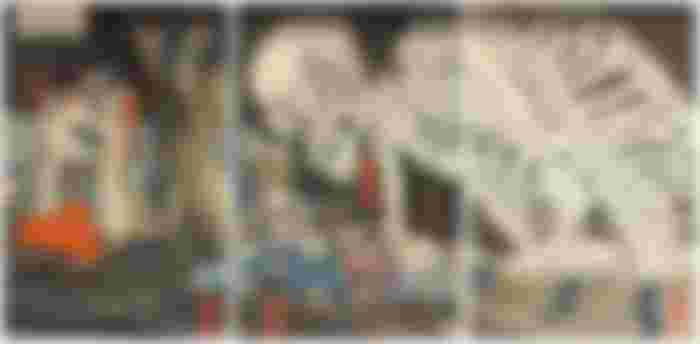Ukiyo-e
- is a kind of Japanese workmanship which flourished from the seventeenth through nineteenth hundreds of years. Its craftsmen delivered woodblock prints and canvases of such subjects as female wonders, kabuki on-screen characters and sumo grapplers, scenes from history and people stories, travel scenes and scenes, greenery, and erotica.
The term ukiyo-e (浮世絵) deciphers as "pictures*of the skimming scene
Edo (current Tokyo) turned into the seat of the Tokugawa shogunate in the mid seventeenth century. The dealer class at the base of the social request, which profited the most from city's quick financial development, started to enjoy the stimulations of kabuki theater, geisha, and mistresses of the joy regions; the term ukiyo ("drifting world") came to depict this libertine way of life. Printed or painted ukiyo-e works rose in the late seventeenth century and were well known with the dealer class, who had gotten rich enough to bear to embellish their homes with them.

The soonest ukiyo-e works developed during the 1670s with Moronobu's compositions and monochromatic prints of excellent ladies. Shading in prints came step by step—from the start just included by hand for uncommon commissions. By the 1740s, specialists, for example, Masanobu utilized different woodblocks to print zones of shading. During the 1760s, the accomplishment of Harunobu's "brocade prints" prompted full-shading creation getting standard, with at least ten squares used to make each print. Authorities have valued the pictures of delights and entertainers by experts, for example, Kiyonaga, Utamaro, and Sharaku that came in the late eighteenth century. In the nineteenth century followed a couple of bosses best associated with their scenes: the intense formalist Hokusai, whose Great Wave off Kanagawa is extraordinary compared to other known works of Japanese workmanship; and the tranquil, environmental Hiroshige, generally noted for his arrangement The Fifty-three Stations of the Tōkaidō. Following the passings of these two bosses, and against the innovative and social modernization that followed the Meiji Restoration of 1868, ukiyo-e creation went into steep decrease.
Some ukiyo-e craftsmen represented considerable authority in making artistic creations, yet most works were prints. Craftsmen once in a while cut their own woodblocks for printing; rather, creation was partitioned between the craftsman, who structured the prints; the carver, who cut the woodblocks; the printer, who inked and squeezed the woodblocks onto hand-made paper; and the distributer, who financed, advanced, and conveyed the works. As printing was finished by hand, printers had the option to accomplish impacts unreasonable with machines, for example, the mixing or degree of hues on the printing square.

Ukiyo-e was fundamental to shaping the West's view of Japanese workmanship in the late nineteenth century–particularly the scenes of Hokusai and Hiroshige. From the 1870s Japonism turned into a conspicuous pattern and impacted the early Impressionists, for example, Degas, Manet, and Monet, just as Post-Impressionists, for example, van Gogh and Art Nouveau craftsmen, for example, Toulouse-Lautrec. The twentieth century saw a recovery in Japanese printmaking: the shin-hanga ("new prints") type gained by Western enthusiasm for prints of conventional Japanese scenes, and the sōsaku-hanga ("inventive prints") development advanced independent works planned, cut, and printed by a solitary craftsman. Prints since the late twentieth century have proceeded in a maverick vein, regularly made with procedures imported from the West.

